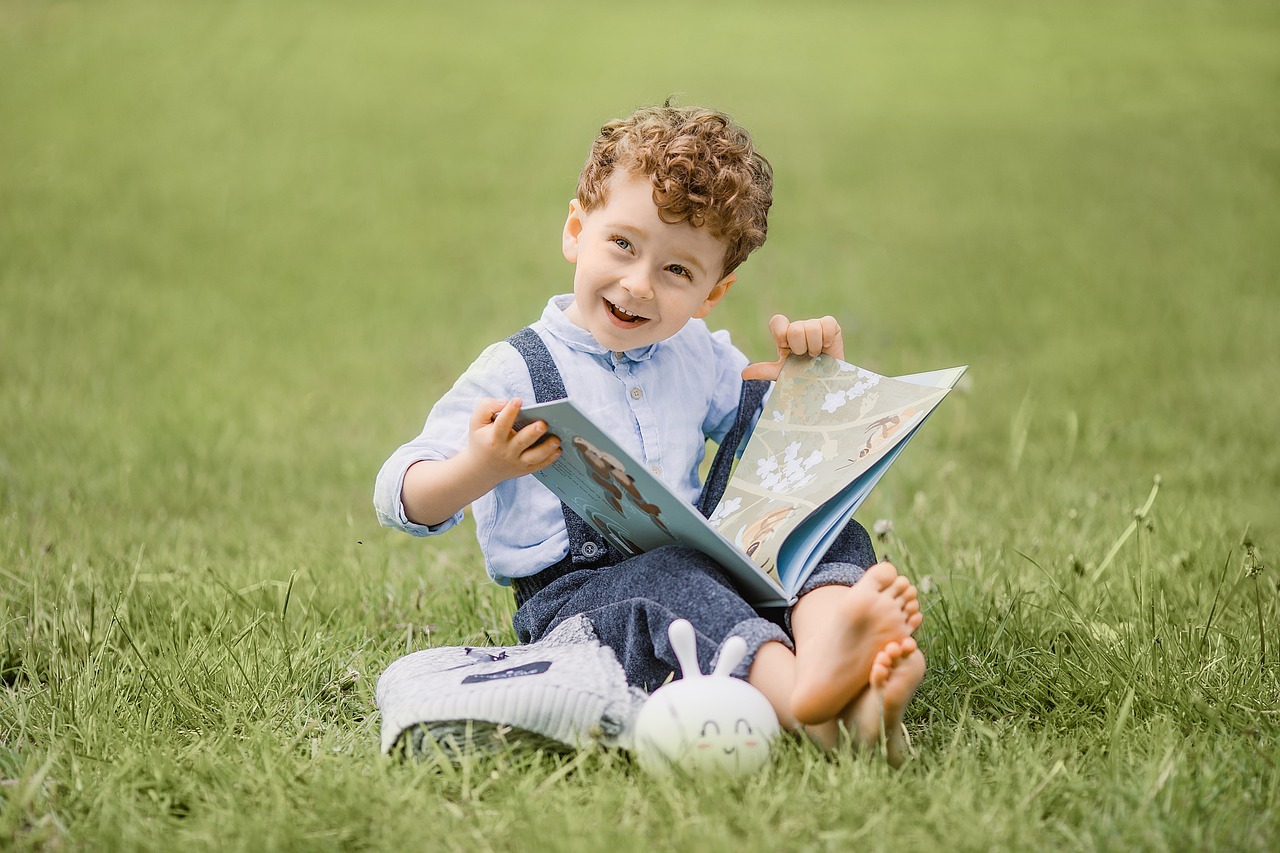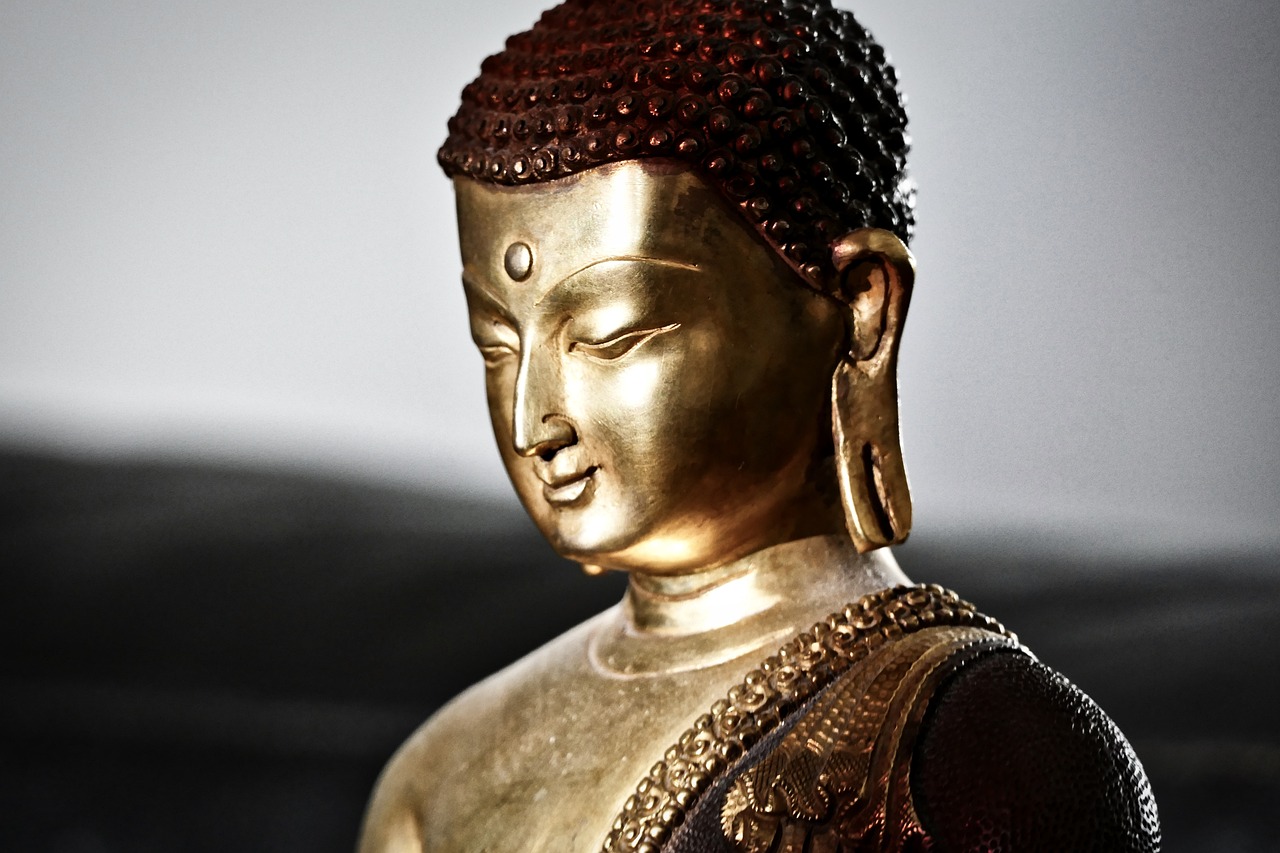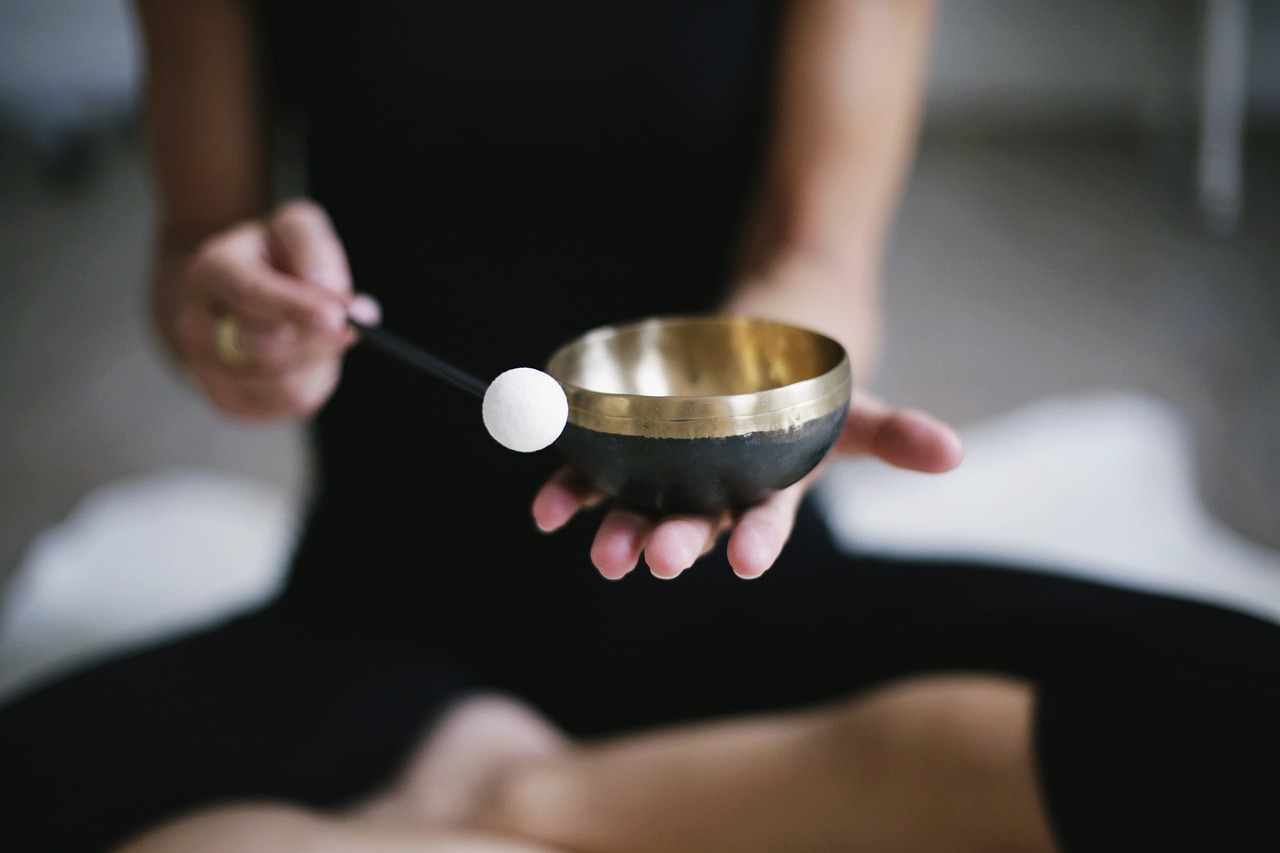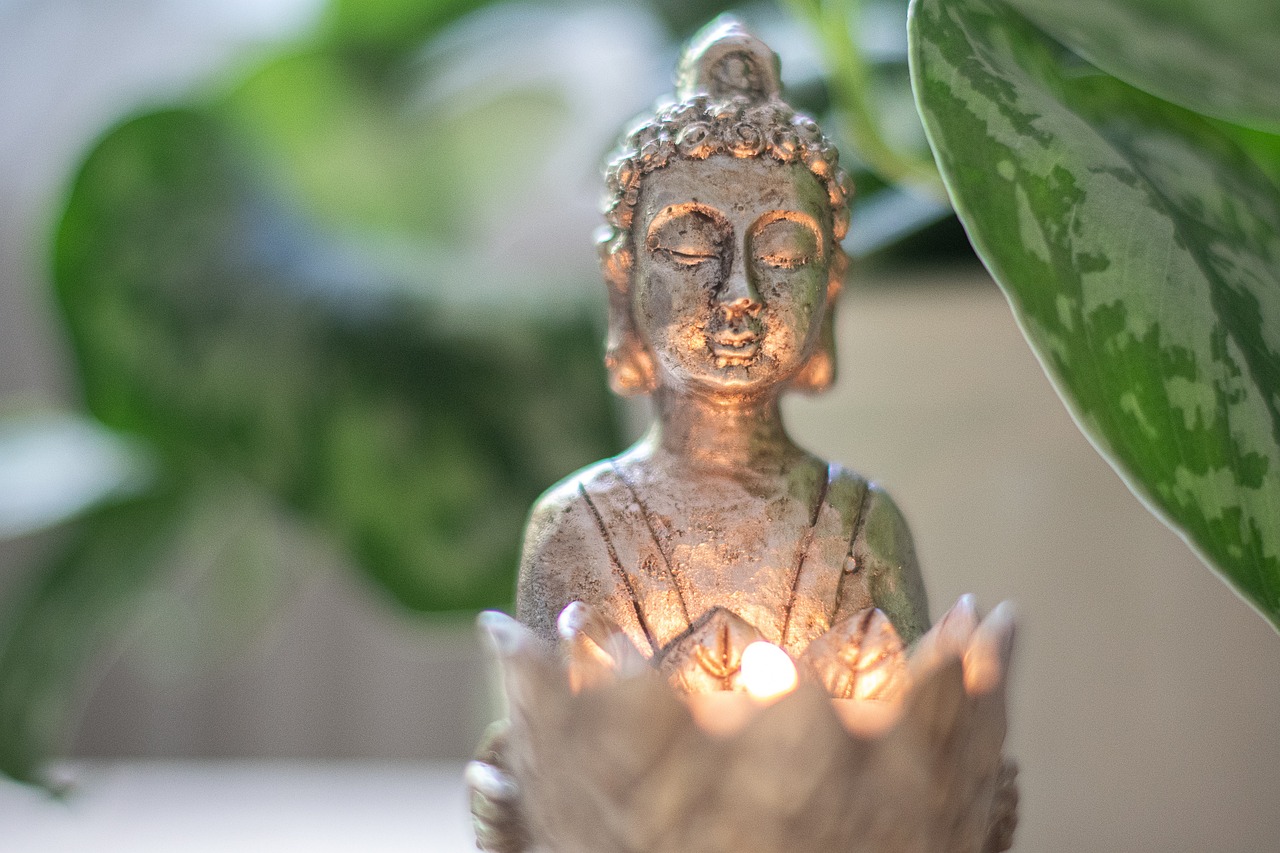The role of mindfulness in personal safety
In today's fast-paced world, where distractions lurk around every corner, the concept of mindfulness has emerged as a powerful tool for enhancing personal safety. But what exactly is mindfulness? At its core, mindfulness is about being fully present and engaged in the moment, allowing us to navigate our surroundings with heightened awareness and intentionality. Imagine walking through a crowded street, your mind buzzing with thoughts about work or personal issues. In this state, you might miss crucial cues about your environment, such as a suspicious individual or an approaching vehicle. By practicing mindfulness, you can train your brain to focus on the here and now, significantly improving your ability to assess potential threats and make informed decisions.
Mindfulness isn't just a trendy buzzword; it's rooted in ancient practices that have been used for centuries to cultivate awareness and emotional well-being. Originating from Buddhist traditions, mindfulness has gained traction in modern psychology and wellness communities. Its significance in personal safety cannot be overstated; by fostering a proactive mindset, mindfulness equips individuals with the tools to respond effectively to various situations. Whether you're walking alone at night or navigating a high-pressure environment, being mindful can be your best ally.
One of the most compelling aspects of mindfulness is its ability to reduce stress. When we experience stress, our bodies enter a fight-or-flight mode, which can cloud our judgment and impair our ability to react appropriately. Mindfulness practices help to calm the mind and body, allowing for clearer thinking and better decision-making in challenging circumstances. In essence, being mindful transforms our approach to safety from a reactive stance to a proactive one, empowering us to take charge of our personal security.
Moreover, mindfulness encourages a sense of resilience. Life is filled with unexpected challenges, and having the mental fortitude to navigate these obstacles is crucial for maintaining safety. By regularly engaging in mindfulness practices, individuals can build emotional resilience, making it easier to cope with stressors and setbacks. This resilience not only enhances personal safety but also contributes to overall mental well-being, creating a positive feedback loop that reinforces the importance of mindfulness in our daily lives.
In conclusion, the role of mindfulness in personal safety is multifaceted and profound. By improving awareness, reducing stress, and fostering resilience, mindfulness equips us with essential skills for navigating a complex world. So, the next time you find yourself in a potentially unsafe situation, take a moment to ground yourself in the present. Breathe deeply, observe your surroundings, and let mindfulness guide your actions. After all, being mindful is not just about safety; it's about living life to the fullest, with intention and awareness.
- What is mindfulness? Mindfulness is the practice of being fully present and engaged in the moment, which can enhance awareness and decision-making.
- How can mindfulness improve personal safety? By increasing situational awareness, reducing stress, and fostering resilience, mindfulness helps individuals respond better to potential threats.
- What are some mindfulness techniques? Techniques include meditation, breathing exercises, and body scan meditation, all of which enhance attentiveness to surroundings.
- Can mindfulness help in high-stress situations? Yes, mindfulness allows individuals to remain calm and make rational decisions, even under pressure.
- Are there long-term benefits to practicing mindfulness? Consistent mindfulness practice leads to sustained improvements in awareness and decision-making skills, contributing to overall personal safety.

Understanding Mindfulness
This article explores how mindfulness practices can enhance personal safety by improving awareness, reducing stress, and fostering a proactive mindset in various situations.
Mindfulness is more than just a buzzword; it’s a transformative practice that invites us to become fully present and engaged in the moment. Imagine standing in a busy street, sounds swirling around you, thoughts racing in your mind. Now, picture yourself pausing, taking a deep breath, and tuning into your surroundings. That’s mindfulness in action! This practice has its roots in ancient meditation traditions, particularly in Buddhism, but has found a home in modern psychology and wellness movements.
The significance of mindfulness in enhancing personal safety cannot be overstated. When we practice mindfulness, we cultivate a heightened sense of awareness, enabling us to recognize potential threats before they escalate. This is not just about being alert; it’s about developing a deep connection with our environment and ourselves. Mindfulness teaches us to observe our thoughts and feelings without judgment, allowing us to respond to situations rather than react impulsively.
Many people often wonder how mindfulness can be integrated into daily life. Here are some key aspects of mindfulness that highlight its importance:
- Present Moment Awareness: Mindfulness encourages us to focus on the here and now, reducing distractions and enhancing our ability to notice subtle changes in our environment.
- Emotional Clarity: By acknowledging our emotions without being overwhelmed by them, we can make clearer decisions that prioritize our safety.
- Stress Reduction: Mindfulness practices help lower stress levels, which can cloud judgment and lead to unsafe choices.
As we delve deeper into mindfulness, it becomes clear that it is not just a practice but a lifestyle. It encourages us to embrace each moment with curiosity and openness, fostering a mindset that is both resilient and adaptable. In today’s fast-paced world, where distractions are everywhere, cultivating mindfulness can be a game-changer in ensuring our personal safety.
Awareness is crucial for personal safety. Here, we will discuss how mindfulness training can heighten situational awareness and help individuals recognize potential threats more effectively.
Various mindfulness techniques, such as meditation and breathing exercises, can improve awareness. This subsection will outline specific practices that enhance attentiveness to surroundings.
Breathing exercises are foundational to mindfulness. This section will explain how controlled breathing can calm the mind and sharpen focus, leading to better safety decisions.
Body scan meditation helps individuals connect with their physical state. This part will describe how this technique can aid in recognizing signs of stress or danger.
High-stress situations can compromise safety. This subsection will explore how mindfulness can help individuals remain calm and make rational decisions under pressure.
Resilience is key to personal safety. This section will discuss how mindfulness practices can foster resilience, enabling individuals to cope better with challenges and setbacks.
Mindfulness contributes to emotional regulation. This part will explain how managing emotions can prevent impulsive reactions that might compromise safety.
Practicing mindfulness has long-term benefits for personal safety. This subsection will highlight how consistent mindfulness practice can lead to sustained improvements in awareness and decision-making skills.
Q: What is mindfulness?
A: Mindfulness is the practice of being fully present and engaged in the moment, which enhances awareness and reduces stress.
Q: How can mindfulness improve personal safety?
A: By increasing awareness and emotional regulation, mindfulness helps individuals recognize potential threats and respond effectively.
Q: What are some mindfulness techniques I can practice?
A: Techniques include breathing exercises, meditation, and body scans, all of which can enhance awareness and focus.
Q: Can mindfulness help in high-stress situations?
A: Yes! Mindfulness allows individuals to remain calm and make rational decisions, even under pressure.

The Connection Between Mindfulness and Awareness
When we talk about personal safety, one of the most critical elements is awareness. Think of awareness as your personal radar, constantly scanning your environment for potential threats or changes. Now, how does mindfulness fit into this picture? Well, mindfulness is like the upgrade to that radar system, enhancing its sensitivity and range. It allows you to not just observe what's happening around you but to truly understand and interpret the signals your environment is sending.
Mindfulness teaches us to be present, to really engage with our surroundings rather than drifting through life on autopilot. This heightened state of consciousness can significantly improve our situational awareness. For example, when you're fully present, you're more likely to notice that suspicious person lurking in the shadows or that car that seems to be following you. It's about sharpening your senses and tuning into the subtleties of your environment.
Here are a few ways mindfulness enhances awareness:
- Heightened Sensory Perception: Mindfulness practices encourage you to focus on your senses. This means you're more likely to notice sounds, smells, and movements that you might otherwise overlook.
- Improved Focus: By training your mind to concentrate on the present, you can reduce distractions, allowing for a clearer assessment of your surroundings.
- Increased Intuition: Mindfulness helps you tap into your gut feelings. When you're more aware of your body and emotions, you can better recognize when something feels off.
Moreover, mindfulness can help you cultivate a proactive mindset. Instead of reacting to situations as they arise, mindfulness encourages you to anticipate and prepare for potential challenges. This shift from a reactive to a proactive approach is vital in personal safety. It means you're not just waiting for something to happen; you're actively looking for ways to prevent it.
In summary, the connection between mindfulness and awareness is profound. By incorporating mindfulness into your daily routine, you can enhance your ability to perceive and respond to your environment effectively. This not only boosts your personal safety but also enriches your overall quality of life.

Mindfulness Techniques for Increased Awareness
In our fast-paced world, where distractions lurk around every corner, it’s easy to lose sight of what’s happening right in front of us. This is where mindfulness comes into play, acting like a spotlight that shines on the present moment. By incorporating specific mindfulness techniques into our daily routines, we can significantly enhance our awareness, which is crucial for personal safety. Let’s dive into some effective practices that can help sharpen our attentiveness to our surroundings.
One of the most powerful techniques is meditation. You might think of meditation as sitting cross-legged in silence, but it can be much more versatile. Even a few minutes of focused breathing can help ground you in the present. When you meditate, you train your mind to focus on the here and now, making it easier to notice subtle changes in your environment. For instance, if you’re walking in a busy area, a simple meditation session beforehand can help you remain alert to any potential dangers, such as an approaching vehicle or an unexpected crowd.
Another effective practice is breathing exercises. These are foundational to mindfulness and can be done anywhere, anytime. By taking slow, deep breaths, you not only calm your mind but also heighten your awareness. When you focus on your breath, you create a moment of stillness that allows you to tune into your surroundings. For example, if you find yourself feeling anxious in a crowded space, try the following breathing technique:
| Step | Description |
|---|---|
| 1 | Inhale deeply through your nose for a count of four. |
| 2 | Hold your breath for a count of four. |
| 3 | Exhale slowly through your mouth for a count of six. |
| 4 | Pause for a count of two before the next inhale. |
By repeating this cycle a few times, you’ll find that your mind clears, and your senses become more attuned to what’s happening around you. You might even notice details you hadn’t seen before, like the expressions on people’s faces or the sounds of the environment, which could be vital in assessing any potential risks.
Additionally, Body Scan Meditation is another technique worth mentioning. This practice involves mentally scanning your body from head to toe, paying attention to any sensations, tensions, or discomforts. It’s a way to connect with your physical state and can be particularly helpful in recognizing signs of stress or danger. For instance, if you notice tension in your shoulders while in a public place, it might be your body’s way of alerting you to a potential threat. By regularly practicing body scans, you can enhance your ability to read your body’s signals, leading to better safety decisions.
Incorporating these mindfulness techniques into your daily life doesn’t have to be daunting. Start small, perhaps with just a few minutes of meditation or a simple breathing exercise, and gradually build from there. The goal is to create a habit that not only improves your awareness but also enriches your overall well-being. Remember, mindfulness is not just about being present; it’s about being aware of your surroundings, making informed decisions, and ultimately enhancing your personal safety.

Breathing Exercises
Breathing exercises are like the secret sauce of mindfulness practices, and they play a crucial role in enhancing personal safety. Imagine being caught in a tense situation—your heart races, your palms sweat, and your mind is a whirlwind of thoughts. Now, picture yourself taking a moment to breathe deeply, allowing your body to calm down and your mind to clear. That’s the power of controlled breathing! By focusing on your breath, you can ground yourself and gain clarity, which can lead to better decision-making when it matters the most.
So, how do these breathing exercises work? Well, they help activate the body’s relaxation response, which counteracts the stress response. This means that when you practice deep breathing, you're not just filling your lungs with air; you're also signaling to your brain that it’s time to chill out. It’s like flipping a switch from panic mode to calm mode! When you’re calm, you’re more aware of your surroundings, which is essential for personal safety.
Here are a couple of effective breathing techniques you can easily incorporate into your daily routine:
- Diaphragmatic Breathing: This involves breathing deeply into your diaphragm rather than shallowly into your chest. Place one hand on your belly and the other on your chest. Inhale deeply through your nose, ensuring your belly rises more than your chest. Exhale slowly through your mouth. This technique not only calms your mind but also increases oxygen flow, which can sharpen your focus.
- Box Breathing: This method is perfect for moments when you need to regain control. Inhale for a count of four, hold your breath for four counts, exhale for four counts, and then hold again for four counts. Repeat this cycle several times. It’s like creating a mental box where you can contain your stress and anxiety, making it easier to handle any situation that comes your way.
Incorporating these breathing exercises into your daily life can lead to significant improvements in your overall well-being. Think of it as a mental workout: the more you practice, the stronger your ability to remain calm and focused becomes. Whether you’re preparing for a big presentation, navigating a crowded street, or dealing with unexpected challenges, these techniques can empower you to stay composed and aware. Remember, mindfulness is a journey, and breathing exercises are a powerful tool in enhancing your personal safety along the way.
1. How often should I practice breathing exercises?
It's beneficial to practice breathing exercises daily, even if it's just for a few minutes. Consistency helps reinforce the calming effects.
2. Can breathing exercises help with anxiety?
Absolutely! Breathing exercises are a proven method to reduce anxiety and promote relaxation by calming the nervous system.
3. Do I need to be in a quiet place to practice breathing exercises?
While a quiet environment can enhance your practice, you can perform breathing exercises anywhere—at work, in your car, or even in a crowded place.
4. How quickly can I see benefits from breathing exercises?
Many people report feeling calmer and more focused almost immediately after practicing breathing exercises. Long-term benefits build with regular practice.

Body Scan Meditation
Body scan meditation is a powerful mindfulness technique that encourages individuals to develop a deeper awareness of their physical sensations, promoting a greater connection between the mind and body. Imagine lying down in a peaceful setting, closing your eyes, and allowing your attention to travel through your body, from the tips of your toes to the crown of your head. This practice not only helps you tune into your physical state but also serves as a vital tool for enhancing personal safety by recognizing signs of stress or discomfort that might otherwise go unnoticed.
The beauty of body scan meditation lies in its simplicity. You don’t need any special equipment or a serene environment to practice; all you need is a few moments of your time and a willingness to be present. As you begin, focus on your breath, allowing it to flow naturally. Then, gently direct your attention to different parts of your body, starting from your feet and moving upwards. Notice any sensations—whether it’s tension, warmth, or even numbness. This heightened awareness can alert you to areas of stress that may indicate underlying anxiety or potential danger.
One of the key benefits of body scan meditation is its ability to foster relaxation. When you consciously relax each part of your body, you create a sense of calm that can significantly reduce stress levels. In moments of high tension—like when navigating a crowded area or dealing with conflict—this practice can help you maintain clarity and focus. By regularly engaging in body scan meditation, you train your mind to respond more effectively to stressors, ultimately enhancing your personal safety.
Here’s a simple step-by-step guide to practicing body scan meditation:
- Find a quiet space: Choose a comfortable position, either lying down or sitting, where you won’t be disturbed.
- Close your eyes: This helps to minimize distractions and allows you to focus inward.
- Start with your breath: Take a few deep breaths, inhaling through your nose and exhaling through your mouth, to center yourself.
- Focus on your body: Begin at your toes, noticing any sensations. Gradually move up through your feet, legs, abdomen, chest, arms, neck, and head.
- Observe without judgment: Acknowledge any feelings or sensations without trying to change them. Just be present.
- Conclude with gratitude: Once you’ve scanned your entire body, take a moment to express gratitude for your body and its experiences.
Incorporating body scan meditation into your daily routine can lead to profound changes in how you perceive and react to your environment. By becoming more attuned to your body’s signals, you empower yourself to make better decisions in potentially dangerous situations. The more you practice, the more natural it becomes to identify when something feels off, allowing you to respond proactively rather than reactively. This refined awareness is a cornerstone of personal safety, making body scan meditation an invaluable tool in your mindfulness toolkit.
1. How often should I practice body scan meditation?
It's recommended to practice body scan meditation regularly, ideally daily or several times a week, to reap its full benefits. Even a few minutes can make a significant difference.
2. Can I do body scan meditation anywhere?
Yes! While a quiet space is ideal, you can practice body scan meditation in various settings, such as at home, in a park, or even during a break at work, as long as you can find a moment of peace.
3. What if I find it difficult to concentrate during the body scan?
It's completely normal to struggle with concentration at first. If your mind wanders, gently bring your focus back to your breath and the sensations in your body. With practice, your concentration will improve.
4. Is body scan meditation suitable for everyone?
Yes, body scan meditation is generally safe for most people. However, if you have specific health concerns or conditions, it's always a good idea to consult with a healthcare professional before starting any new meditation practice.

Mindfulness in High-Stress Situations
High-stress situations can feel like a whirlwind, can't they? One moment you’re cruising along, and the next, you’re caught in a storm of panic and anxiety. This is where mindfulness steps in like a lighthouse guiding you through the fog. By anchoring ourselves in the present moment, we can significantly improve our ability to respond rather than react when the heat is on. Mindfulness teaches us to pause, breathe, and assess situations calmly, rather than getting swept away by the current of our emotions.
Imagine you’re in a crowded place, and suddenly you hear a loud noise. Your heart races, your palms sweat, and your mind races with worst-case scenarios. In such moments, practicing mindfulness can transform your response. Instead of succumbing to fear, you can take a deep breath, focus on your surroundings, and observe what’s actually happening. This practice of grounding yourself allows you to gain clarity, making it easier to determine whether the situation is genuinely dangerous or just a false alarm.
One effective mindfulness technique in high-stress situations is the 5-4-3-2-1 grounding exercise. This method helps you reconnect with your senses and distracts your mind from overwhelming thoughts. Here’s how it works:
- 5 things you can see: Look around and identify five things in your environment.
- 4 things you can touch: Notice four things you can physically feel, whether it’s the texture of your clothes or the ground beneath your feet.
- 3 things you can hear: Listen carefully and identify three sounds around you.
- 2 things you can smell: Take a moment to notice two scents in the air.
- 1 thing you can taste: Focus on one thing you can taste, maybe the remnants of your last meal or a sip of water.
By engaging your senses, you pull yourself back into the present, reducing the intensity of your stress response. This simple exercise can be a game-changer, helping you regain control and think clearly even when the pressure is on.
Moreover, mindfulness can promote a sense of calmness that is essential in high-stress situations. When faced with challenges, our bodies trigger a fight-or-flight response, flooding us with stress hormones like adrenaline and cortisol. Mindfulness practices, such as focused breathing or body scan meditation, can counteract these effects. They help regulate our physiological responses, allowing us to lower our heart rate and reduce anxiety levels. This physiological calmness translates into mental clarity, enabling us to assess the situation more rationally.
In summary, integrating mindfulness into our lives equips us with the tools to navigate high-stress situations more effectively. By fostering awareness and emotional regulation, we can respond to challenges with a clear mind and a steady heart. So, next time you find yourself in a stressful scenario, remember: a moment of mindfulness can be your greatest ally.
- What is mindfulness? Mindfulness is the practice of being fully present and engaged in the moment, which enhances awareness and emotional regulation.
- How can mindfulness help in stressful situations? Mindfulness helps individuals remain calm, make rational decisions, and regain control in high-pressure environments.
- What are some mindfulness techniques? Techniques include deep breathing, meditation, and grounding exercises like the 5-4-3-2-1 method.
- Can mindfulness improve personal safety? Yes, by enhancing awareness and emotional regulation, mindfulness can lead to better decision-making and increased personal safety.

Building Resilience Through Mindfulness
In today’s fast-paced world, the ability to bounce back from challenges is more important than ever. Resilience is like a mental muscle; the more you work on it, the stronger it becomes. Mindfulness practices play a crucial role in building this resilience. By fostering a present-moment awareness, mindfulness enables individuals to navigate life's ups and downs with greater ease and confidence. Imagine facing a storm; while some might get swept away, those who practice mindfulness can find their footing, adapting to the winds of change.
At its core, mindfulness teaches us to observe our thoughts and feelings without judgment. This non-reactive stance allows us to process emotions more effectively, preventing them from overwhelming us. When faced with stressful situations, individuals who practice mindfulness can pause, take a deep breath, and assess the situation calmly rather than reacting impulsively. This emotional regulation is vital for maintaining personal safety, as it helps in making rational decisions instead of succumbing to panic.
Furthermore, mindfulness enhances our ability to cope with adversity. Just like a tree bends but doesn’t break in a storm, resilient individuals can adapt to challenges without losing their core strength. Mindfulness equips us with tools to manage stress, such as recognizing when we’re becoming overwhelmed and employing techniques to ground ourselves. For instance, a simple practice like noticing your breath can serve as an anchor during turbulent times, allowing you to regain control and focus.
To illustrate how mindfulness can bolster resilience, consider the following table that highlights key mindfulness practices and their benefits:
| Mindfulness Practice | Benefits for Resilience |
|---|---|
| Mindful Breathing | Calms the mind, reduces anxiety, and promotes clarity in decision-making. |
| Body Scan Meditation | Enhances body awareness, helping to identify physical signs of stress. |
| Gratitude Journaling | Shifts focus from negative to positive experiences, fostering a hopeful outlook. |
| Mindful Walking | Encourages presence in the moment, reducing feelings of overwhelm. |
Incorporating these practices into your daily routine can significantly enhance your resilience. Imagine starting your day with a few minutes of mindful breathing. It sets a positive tone and prepares you to face whatever challenges may arise. Over time, these small practices accumulate, leading to a profound transformation in how you respond to stress and adversity.
Moreover, the long-term benefits of mindfulness extend beyond immediate stress relief. Consistent practice can lead to improved emotional intelligence, helping individuals to better understand and manage their feelings and reactions. This understanding is crucial for maintaining personal safety, as it allows one to recognize when they are feeling threatened or anxious, and to take appropriate action rather than being caught off guard.
In conclusion, building resilience through mindfulness is not just a lofty idea; it is a practical approach that can lead to tangible improvements in personal safety and overall well-being. By cultivating a mindful mindset, you empower yourself to navigate life's challenges with grace and confidence. So, why not start today? Your future self will thank you!
- What is mindfulness? Mindfulness is the practice of being present and fully engaged in the moment, without judgment.
- How does mindfulness improve personal safety? By enhancing awareness and emotional regulation, mindfulness helps individuals recognize potential threats and respond calmly.
- Can mindfulness help in high-stress situations? Yes, mindfulness can help individuals remain calm and make rational decisions under pressure.
- What are some mindfulness techniques? Techniques include mindful breathing, body scan meditation, and gratitude journaling.

Emotional Regulation
Emotional regulation is a vital skill that can significantly impact personal safety, and mindfulness plays a crucial role in honing this ability. When we talk about emotional regulation, we're referring to the processes that influence which emotions we have, when we have them, and how we express those emotions. Imagine being in a high-pressure situation, like navigating through a crowded area or facing an unexpected confrontation. How you manage your emotions in these moments can determine your safety and well-being.
Mindfulness practices help individuals become more aware of their emotional states, allowing them to recognize feelings before they escalate into impulsive reactions. For instance, when you practice mindfulness, you develop a heightened sense of self-awareness. You start to notice physical sensations, thoughts, and emotions as they arise. This awareness acts like a safety net, giving you the opportunity to pause and assess the situation before reacting. Instead of responding with anger or fear, mindfulness encourages a calm and rational approach, which is essential for making safe decisions.
Consider the following benefits of emotional regulation through mindfulness:
- Improved Decision-Making: When emotions are regulated, individuals can think more clearly, leading to better choices in stressful situations.
- Reduced Impulsivity: Mindfulness helps in curbing impulsive reactions, which can often lead to dangerous outcomes.
- Enhanced Communication: By managing emotions, individuals can communicate more effectively, reducing misunderstandings that could escalate into conflict.
Moreover, practicing mindfulness techniques such as deep breathing or meditation can create a buffer against overwhelming emotions. For instance, when you feel anxious, taking a few deep breaths can lower your heart rate and bring clarity to your thoughts. This simple act of breathing can mean the difference between a rash decision and a measured response. The ability to regulate emotions not only helps in personal safety but also fosters healthier relationships and environments.
In conclusion, integrating mindfulness into your daily routine can significantly enhance your emotional regulation skills. By fostering a deeper understanding of your emotions and responses, you can navigate life's challenges with greater ease and safety. Whether you find yourself in a bustling city or a tense social situation, the ability to regulate your emotions can empower you to act wisely and protect yourself effectively.
Q: How does mindfulness improve emotional regulation?
A: Mindfulness enhances emotional regulation by increasing self-awareness, allowing individuals to recognize and manage their emotions before they escalate into impulsive actions.
Q: What mindfulness techniques are best for emotional regulation?
A: Techniques such as deep breathing, meditation, and body scan exercises are effective for improving emotional regulation by promoting relaxation and self-awareness.
Q: Can mindfulness help in high-stress situations?
A: Yes, practicing mindfulness can help individuals stay calm and focused during high-stress situations, enabling them to make rational decisions and respond appropriately.
Q: How long does it take to see improvements in emotional regulation through mindfulness?
A: While individual experiences may vary, consistent practice over several weeks can lead to noticeable improvements in emotional regulation and overall well-being.

Long-Term Benefits of Mindfulness
Practicing mindfulness isn't just a trendy wellness fad; it offers long-lasting benefits that can significantly enhance personal safety and overall well-being. Think of mindfulness as a mental workout—just like lifting weights strengthens your body, mindfulness strengthens your mind. Over time, these practices can lead to profound changes in how you perceive and respond to the world around you.
One of the most significant long-term benefits of mindfulness is improved situational awareness. Regular mindfulness practice trains your brain to be more present and attentive, allowing you to notice subtle cues in your environment that you might have previously overlooked. For example, you might start to pick up on the body language of people around you, helping you to identify potential threats before they escalate. This heightened awareness can make a world of difference in maintaining personal safety.
Moreover, mindfulness fosters better decision-making skills. When faced with a stressful situation, individuals often react impulsively, which can lead to unsafe choices. Mindfulness encourages a pause—a moment to breathe and assess the situation before responding. This practice of slowing down allows for more deliberate and rational decision-making, which is crucial in high-stress scenarios. Imagine being in a crowded space and sensing something amiss. A mindful person might take a moment to evaluate the situation rather than jumping to conclusions or reacting out of fear.
Another significant advantage is the reduction of anxiety and stress. Chronic stress can cloud judgment and impair your ability to respond effectively in emergencies. Through mindfulness, you learn to manage stress better, leading to a calmer state of mind. This calmness not only enhances your ability to think clearly but also positively influences those around you. When you remain composed, others are likely to follow suit, creating a more secure environment for everyone.
Additionally, mindfulness can promote a sense of community and connection. Engaging in mindfulness practices, whether through group meditation or workshops, helps build relationships with like-minded individuals. These connections can be invaluable in times of crisis, providing a support network that enhances personal safety. Together, you can share experiences and strategies, creating a collective resilience that strengthens the community as a whole.
| Benefit | Description |
|---|---|
| Improved Situational Awareness | Heightened ability to notice subtle cues in your environment. |
| Better Decision-Making | Encourages rational responses in stressful situations. |
| Reduced Anxiety and Stress | Helps manage stress, leading to a calmer state of mind. |
| Community and Connection | Builds relationships that provide support during crises. |
In conclusion, the long-term benefits of mindfulness extend far beyond the immediate moment. By incorporating mindfulness into your daily routine, you can cultivate a state of awareness that makes you more alert to potential dangers, enhances your decision-making capabilities, and fosters a supportive community around you. The journey of mindfulness is ongoing, but the rewards are profound and lasting, making it a vital practice for anyone looking to enhance their personal safety.
- What is mindfulness? Mindfulness is the practice of being fully present and engaged in the moment, allowing for greater awareness and focus.
- How can mindfulness improve personal safety? By enhancing awareness and decision-making skills, mindfulness helps individuals recognize potential threats and respond more effectively.
- What are some simple mindfulness techniques? Techniques include breathing exercises, body scan meditation, and mindful walking.
- Can mindfulness help with stress management? Yes, mindfulness practices are proven to reduce stress and anxiety, leading to a calmer state of mind.
Frequently Asked Questions
- What is mindfulness?
Mindfulness is the practice of being fully present and engaged in the moment. It involves paying attention to your thoughts, feelings, and surroundings without judgment. This practice can help enhance personal safety by improving awareness and reducing stress.
- How does mindfulness improve personal safety?
Mindfulness enhances personal safety by increasing your situational awareness. When you're mindful, you're more likely to notice potential threats and react appropriately. It also helps in managing stress, which can cloud your judgment in critical situations.
- What techniques can I use to practice mindfulness?
There are several techniques you can use to practice mindfulness, including meditation, breathing exercises, and body scan meditation. These practices help you focus on the present moment and enhance your awareness of your surroundings.
- Can mindfulness help in high-stress situations?
Absolutely! Mindfulness can be a game-changer in high-stress situations. By staying calm and centered, you can think more clearly and make better decisions, which is crucial for maintaining personal safety.
- How does mindfulness contribute to emotional regulation?
Mindfulness helps you recognize and manage your emotions effectively. By being aware of your feelings, you can prevent impulsive reactions that may compromise your safety, allowing you to respond thoughtfully instead.
- What are the long-term benefits of practicing mindfulness?
Long-term mindfulness practice can lead to sustained improvements in awareness and decision-making skills. It builds resilience, enabling you to cope better with challenges and setbacks, ultimately enhancing your overall personal safety.



















